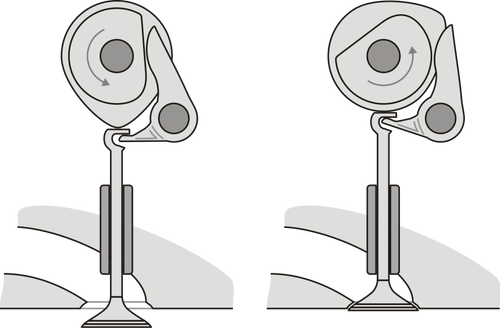Learn about Ducati's Desmodromic Valves
Today I learnt about desmodromic valves. I learnt it watching the video from Donut Media about desmo valves. I really like Donut Media, as it’s really educative and entertaining at the same time. I think around 50% of my engineering knowledge is thanks to them.
Desmodromic valves have been present since the early 1900’s. The first to use them was Austin’s marine engine, which was installed in a speedboat called “Irene I”. But… what are desmodromic valves?
Definition
As you may know, the valves on 4-stroke engines are there to let air get in and out. The movement of the valves is defined by the camshaft. The camshaft is connected to the engine by a timing belt. The camshaft has this little piece that is deformed on one side, and when it turns, moves the valve, pushing the bucket tappet, thus letting air in (or out).
To return to its original place, the valve contains a spring, which moves it back.
However, this technique isn’t quite effective at high rpms, as the camshaft will move the valve down, but the spring won’t have enough time to move the valve to the original position, resulting in an open valve. This issue is known as valve float.
To solve it, you have two options:
- Make the spring harder, taking more power from the engine.
- Use desmodromic valves.
Desmodromic valves don’t have a spring, but instead, there’s a metallic arm which physically moves the valve up and down.
Ducati has been using desmodromic valves for many of their motorcycles since 1956.
Disadvantages
- Heavier than normal spring valves.
- More parts, meaning easier to fail and harder to repair.
- Increased jerk, resulting in more g-forces thus having to design stronger valves.
